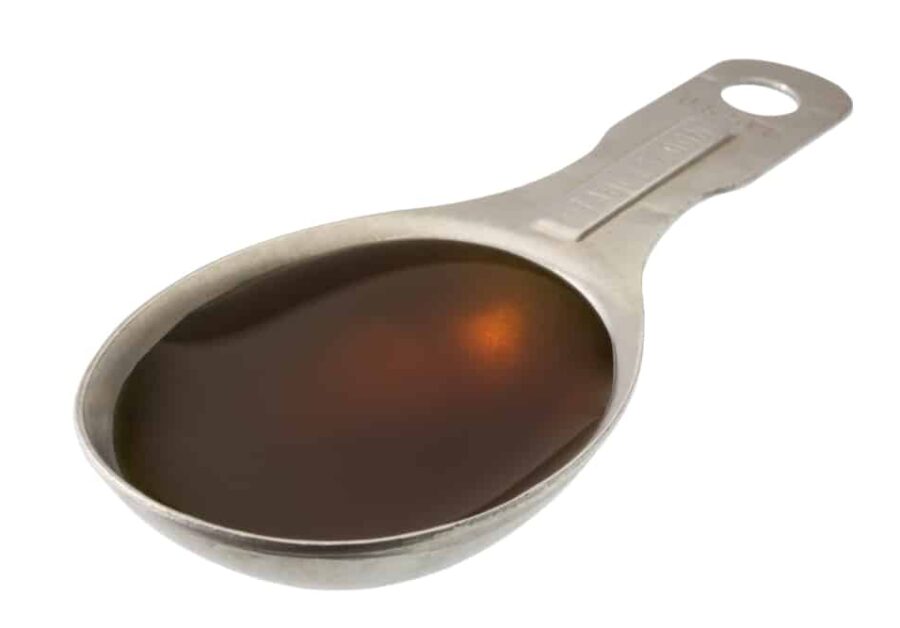There’s nothing quite like the aroma of maple to put a smile on your face.
Am I right?
From plates stacked high with pancakes to crispy, golden brown waffles, maple syrup is one of those things that everyone seems to love. But that delicious taste of maple doesn’t always mean high calorie syrup. In fact, the use of maple extracts has soared over the years and is now in all kinds of baked goodies.
Muffins, cakes, pies, cookies, you name it. If it calls for that singularly unique maple flavor, then maple extracts should be in your kitchen.
But if you’ve landed on this page, you’re probably here because you’re wondering what separates maple flavoring from maple extract.
Aren’t they really the same thing?
Not quite.
The difference between maple flavoring and maple extract is that maple flavoring derives its taste from a seed, known as fenugreek, which produces a maple-like aroma compound known as sotolon (sotolone) whereas maple extract is produced by mixing alcohol with maple syrup to produce the end product.
In this article, we’ll explore these differences in more detail.
What is Maple Flavoring (or Imitation Maple Extract)?
As mentioned earlier, maple flavoring is not actually maple but is derived from fenugreek seeds. Since the flavor is derived from something other than maple, that’s the reason it’s called “artificial” or “imitation”.
Fenugreek leaves are used in (mostly) Indian and Middle Eastern cuisines, and the seeds themselves are sometimes used in salads.
In high concentrations, fenugreek imparts the distinctive curry aroma that lovers of Indian cuisine know well.
In lower concentrations, fenugreek can impart a maple, caramel or burnt sugar aroma which makes it perfect for extracts.
If you’re interested in making your own extracts at home, you’ll find plenty of recipes for using fenugreek seeds. Be advised, however, that the aroma of maple will linger in the air long after you ‘re done!
However, it’s not the seeds themselves that are responsible for the maple aroma we all know and love, but an aroma compound that is produced. This compound is known as sotolon (or sotolone) which is a common ingredient used in everything from granola bars to pumpkin spice.
Because of its oily nature solotone allows the aroma to concentrate and remain potent for longer periods of time.
What is Maple Extract?
Unlike maple flavoring, which doesn’t use maple at all, maple extract (or pure maple extract) uses maple syrup as its base ingredient.
It’s produced by infusing or mixing concentrated syrup with alcohol/propylene glycol (or sometimes vegetable glycerin) This process (mostly) removes the sugar from the syrup, leaving only the essence of maple.
Some manufacturers may add caramel coloring agents to produce a “maple syrup look” to the finished product.
When compared to imitation flavoring though, extracts can be weaker, which means they won’t be as concentrated as products made with fenugreek. The bottom line is that you may need to use more of it to get the same taste result.
Does Maple Extract Have Sugar?
The answer is that it depends on the brand you choose. The only way to know for sure is to check the labels. Sometimes sugar itself is not listed on the label but classified in other ways like:
- Maple syrup (comprised mostly of sucrose with trace amounts of glucose and fructose)
- Maple concentrate
Maple Extracts That DO NOT Contain Sugar
- McCormick Maple Extract
- Savory Spice Natural Maple Extract
Maple Extracts That DO Contain Sugar
- Cook’s Pure Maple Extract (contains sugar and maple syrup)
- OliveNation Organic Pure Maple Flavor (contains maple concentrate)
- Watkins Maple Extract (contains maple syrup)
- Silver Cloud Flavors (contains maple syrup)
- Larissa Veronica (contains maple syrup)
Does Maple Extract Have Alcohol?
Similar to sugar, whether an extract has alcohol depends on the brand you select. The reason most manufacturers of extracts use alcohol is that it is the most effective way to extract the maple flavor on a large scale.
Another thing you need to be aware of is that you may come across some extracts that contain a colorless, odorless, tasteless liquid known as propylene glycol. Even though it’s not labeled as such, propylene glycol is chemically similar to alcohol.
If you want to avoid alcohol in your extract, check the labels for food-grade vegetable glycerin (or just glycerin) which is widely used as an alternative to alcohol when making extracts.

Hey there, I’m Melody! I’m a lifelong foodie and love talking about it to anyone who’s willing to listen (or read!) about my opinions. My favorite pastimes include cooking, eating my cooking and thinking about what I’m going to make next!

